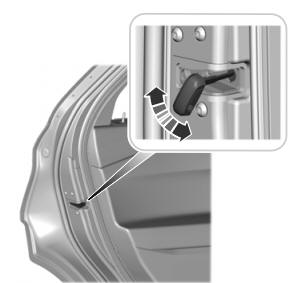Ford Explorer: Engine System - General Information / General Procedures - Cylinder Head Distortion
Special Tool(s) / General Equipment
| Feeler Gauge |
Check
NOTE: Refer to the appropriate Section 303-01 for the specification.
-
как получить лицензию на медицинскую деятельность
NOTE: Make sure all cylinder head surfaces are clear of any gasket material, silicone sealant, oil and coolant. The cylinder head surface must be clean and dry before running a flatness check.
NOTE: Use a Straightedge that is calibrated by the manufacturer to be flat within 0.005 mm (0.0002 in) per running foot of length, such as Snap-On® GA438A or equivalent. For example, if the Straightedge is 61 cm (24 in) long, the machined edge must be flat within 0.010 mm (0.0004 in) from end to end.
Using a Straightedge and a Feeler Gauge Set, inspect the cylinder head for flatness in the sequence shown.
Use the General Equipment: Feeler Gauge
.jpg) |
 General Procedures - Cylinder Bore Taper
General Procedures - Cylinder Bore Taper
Check
NOTE:
Refer to the appropriate Section 303-01 for the specification.
Measure the cylinder bore at the top, middle and bottom
of piston ring travel in 2 directions as indicated...
 General Procedures - Exhaust Manifold Cleaning and Inspection
General Procedures - Exhaust Manifold Cleaning and Inspection
Special Tool(s) /
General Equipment
Feeler Gauge
Cleaning
Clean the exhaust manifold using a suitable solvent. Use
a plastic scraping tool to clean the gasket sealing surfaces...
Other information:
Ford Explorer 2020-2025 Service Manual: Description and Operation - Third Row Seats - System Operation and Component Description
System Operation System Diagram Item Description 1 SCMJ 2 HS-CAN1 3 PCM 4 Liftgate Ajar Switch 5 Power Fold Seat Control Switch 6 Power Folding Seat Motors 7 Hall-Effect Sensors 8 Motors 9 MS-CAN 10 GWM 11 BCM Network Message Chart SCMJ Network Input Messag..
Ford Explorer 2020-2025 Service Manual: Removal and Installation - Front Stabilizer Bar Link
Removal NOTICE: Suspension fasteners are critical parts that affect the performance of vital components and systems. Failure of these fasteners may result in major service expense. Use the same or equivalent parts if replacement is necessary. Do not use a replacement part of lesser quality or substitute design...
Categories
- Manuals Home
- 6th Generation Explorer Owners Manual
- 6th Generation Explorer Service Manual
- Description and Operation - Identification Codes
- Fuel Filler Funnel Location & Running Out of Fuel
- Body and Paint
- New on site
- Most important about car
Child Safety Locks
When these locks are set, you cannot open the rear doors from the inside.

A child safety lock is on the rear edge of each rear door. You must set the child safety lock separately on each door.
Left-Hand Side
